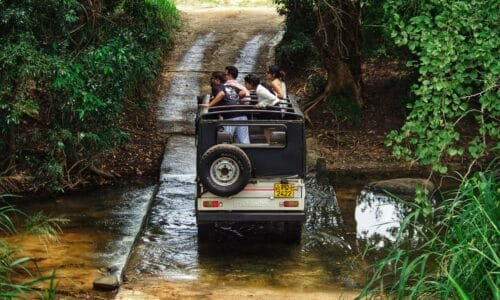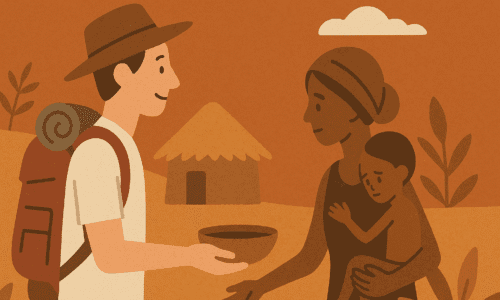India is a land of immense diversity—not just in its culture, language, and landscapes, but also in its climate and cuisine. Whether you’re coming from the frozen fjords of Greenland or the sunny streets of Mexico, adapting to India’s environment and flavors can take a little preparation, but the rewards are unforgettable.
In this guide, we’ll help you understand how to adjust to India’s varying climates, protect yourself from heat and dehydration, and discover delicious food options suited to every type of diet—from carnivores to vegans.
1. Understanding India’s Climate Zones
India’s climate is shaped by its geography—from towering Himalayan ranges to sun-soaked coastal plains. Here’s how it breaks down:
Himachal Pradesh (North India – Mountain Region): Cool summers (15°C to 25°C), snowy winters, and refreshing air. Best visited from March to June or September to November.
Rajasthan (West India – Desert Region): Hot and arid, with temperatures often above 40°C in summer (April to June). Winters (October to February) are mild and ideal for travel.
Delhi (North India – Plains): Hot summers, monsoon rains (July–September), and cold winters. Spring and autumn (Feb–April, Oct–Nov) are the most pleasant times.
South India (Kerala, Tamil Nadu, Karnataka): Tropical and humid. Hill stations like Munnar are cool year-round, but lowlands are warmer. The best time to visit is from October to March, especially for travelers from colder regions.
2. Best Time to Visit India Based on Your Home Climate
If you’re from Canada, Greenland, or Northern Europe: India’s winter months (October to March) are ideal. You’ll enjoy temperate weather without the extreme summer heat.
If you’re from warmer regions like Mexico or parts of Africa: You might adapt better to India’s heat but should still avoid peak summer in places like Rajasthan or Delhi. Hill stations and coastal regions like Kerala offer a more forgiving climate year-round.
3. Sun Protection & Staying Hydrated
India’s sun can be deceptively intense, even on cloudy days. Whether you’re sightseeing in Jaipur or trekking in Kerala, sun safety is key.
- Use high-SPF sunscreen, especially on your face, neck, and arms.
- Wear breathable, light-colored cotton clothes, preferably with full sleeves.
- Carry a reusable water bottle and refill it frequently. Opt for filtered or bottled water.
- Include electrolyte powders or rehydration salts in your travel kit—they help replenish lost minerals.
- Avoid walking around at midday during peak summer (12–3 PM), especially in arid areas like Rajasthan.
4. Indian Cuisine: A Flavorful Adventure
Indian food is known for its rich spices, regional diversity, and deeply rooted culinary traditions. Here’s what to expect and explore:
North India (Delhi, Rajasthan, Himachal)
- Popular dishes: Butter chicken, chole bhature (spiced chickpeas with fried bread), rajma chawal (kidney beans and rice), dal makhani, and various flatbreads.
- Vegan-friendly options: Aloo gobi (potato and cauliflower), bhindi masala (okra), rajma (kidney beans), and rotis made with millet or whole wheat.
Food tip: Spices can be bold. Ask for mild versions or look for “Jain” or “satvik” food, which often uses minimal garlic and spice.
South India (Kerala, Tamil Nadu, Karnataka)
- Popular dishes: Dosa, idli, sambar, Kerala-style fish curry, Chettinad chicken, coconut-based stews.
- Vegan-friendly options: Most South Indian vegetarian meals are naturally vegan or can be easily adapted. Coconut milk is commonly used instead of dairy cream.
Food tip: Rice-based meals and fermented dishes aid digestion and are gentler in hot climates.
Street Food Caution:
India’s street food is delicious but should be approached with care. Choose clean stalls with a local crowd and avoid raw salads or water-based chutneys unless you’re sure of the hygiene.
5. Adapting to the Indian Diet
If you’re worried about how your stomach will respond—don’t stress. Here are a few tips:
- Start with mild foods like plain dal, rice, or khichdi (a porridge-like blend of rice and lentils).
- Probiotic-rich foods like curd (yogurt) are common and aid digestion.
- Carry digestive aids or natural remedies like ginger chews if you’re sensitive to new cuisines.
- Vegan, vegetarian, and gluten-free diets are widely accommodated, especially in spiritual towns and wellness retreats.
6. Balancing Adventure and Self-Care
Traveling in India is enriching, but it’s also sensory-rich—especially for first-timers. You’ll see, hear, and taste more in a week than in a month elsewhere. To make the most of your trip:
Give yourself time to rest and adjust upon arrival.
Schedule some quiet nature days (like a beach stay in Goa or a forest trek in Munnar) between busy cities.
Keep snacks, ORS (oral rehydration solution), and familiar comfort foods with you, especially on longer journeys.
Discover India With Confidence
India is intense, beautiful, and unforgettable. With a bit of preparation and the right mindset, you can not only adapt to its climate and cuisine—you can embrace them fully. At Offbeat Adventure, we design our tours to be immersive yet comfortable, so you get the real India, with real care.
Let the spices surprise you, the sun warm you, and the people welcome you. Your adventure starts now.









